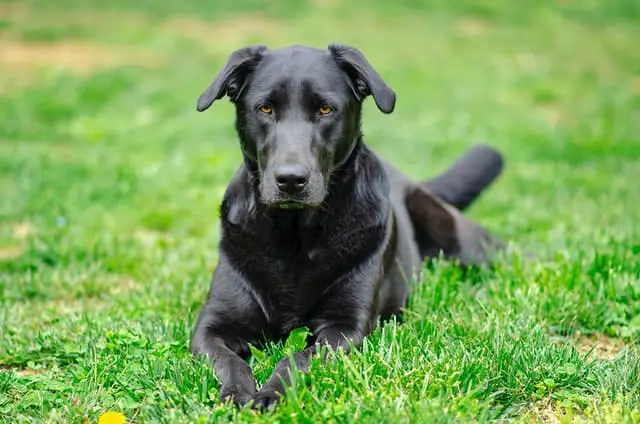
The Mallorcan Shepherd dog breed, also known as Ca de bestiar, is originally from the Balearic Islands and one of the oldest Spanish breeds. Strong, agile and resistant, it is the perfect companion for the flocks of sheep and goats that still exist on the islands. At Petlifey, we explain the characteristics and character of the Mallorcan Shepherd.
Character of the Majorcan Shepherd breed
The Mallorcan Shepherd is a rustic breed of dog with a very noble behaviour. It is brave, faithful, strong and courageous at the same time.
It is the perfect companion for flocks of sheep and goats, but it is also a suspicious and distrustful animal that never welcomes strangers with joy.
It is not an aggressive dog, so no dangerous behaviour should be expected of them. But it is always kept in a discreet background until it is sure that new people who approach its environment are conveniently accepted by their master.
During its youth it can be shy and very reserved, so its education must be worked on from a very early age. Something similar happens with the Border Collie breed .
However, if it is trained well, it is capable of perfectly performing various jobs: from herding, a natural task that it has developed for centuries, to guarding and defense, passing through the protection and vigilance of its guide, an activity in which It was started a long time ago by forest rangers in the Mallorcan mountains.
- Energy: Medium / high level. It is an athletic dog that needs regular exercise
- Temperament: Intelligent, docile, shy, affectionate and faithful, it is the dog of a single master. He is brave and a bit quarrelsome, but it is very sensitive.
- Adaptability: Low. It does not adapt well to life in the city, since it needs open spaces to run and spread out.
- Sociability: Medium / low. Being the dog of a single master, it is very suspicious and distrustful of strangers until its master accepts them; however, it is not an aggressive animal.
- Health: Very good. No trace of hereditary diseases.
- Longevity: Medium. It can live for about 11 years, well above other breeds of similar size to its own.
- Utility: Versatile. It is raised almost exclusively as a shepherd and guard dog, although it has proven to be an excellent companion dog.
- Use: grazing, guarding and defence
Can you have it in an apartment?
It is not the most recommended dog for people who live in a small apartment, since the Mallorcan shepherd will only grow up physically satisfied and mentally fulfilled if it is allowed to practice a large amount of exercise outdoors.
In addition, as with almost all other shepherd dogs, the ca de bestiar can become a very destructive animal if it is bored. It is not a dog that is fashionable, nor willingly adapting to modern life in the city.
Rather, it is a rustic animal in which there are all the characteristics that should adorn an animal destined both to assist the shepherd in the management, driving and surveillance of livestock as well as to protect the property and even the life of its master.
How do you behave with children?
It can only be left with children if they are accompanied by an adult. This is because it is a large dog with great force and could accidentally injure a small one.
It is a dog of a single master and, although it behaves with affection with the rest of the family members. It is not an appropriate pet for beginners.
Characteristics of the Mallorquin Shepherd
In the general appearance of the Mallorcan shepherd, its large size and medium weight stand out. This dog is totally black or black with a white patch on the chest. It is well proportioned and has a rustic, strong, muscular, robust and agile appearance.
Of great nobility, it is a single-owner dog and accepts requests from strangers with difficulty. It is intelligent, docile and affectionate, but extremely shy and very reserved in its youth.
Its sentimentality reaches unsuspected limits and it remains faithful to its master until death. Brave and somewhat quarrelsome, it seems to reflect its thoughts with its eyes.
As a rustic breed, the Mallorcan shepherd loves life outdoors. It is happy if it can have a wide and safe field on which to run, jump and exercise its powerful muscles.
The Mallorcan shepherd, in short, is a rustic breed and still selected today with strictly utilitarian criteria. For this reason, it continues to be, like its ancestors, a strong, hard-working, upright dog, full of vitality and health. It has a higher than average life expectancy in relation to other dogs of the same size.
The movement and gait of the Mallorcan shepherd is firm and elegant. Trot in diagonal bipeds (the left hand moves with the right foot, and the right hand with the left foot), slightly tilting the posterior third of the body with respect to the anterior.
The gallop is frank, rustic, fast, with the hind legs wide apart, placing them outside the hands, as if jumping. Its favourite and working step is the gallop.
Ca de Bestiar breed standard
- General Appearance: Very large in size and medium weight, well proportioned and rustic, strong, muscular, robust and agile.
- Other names: Majorca Shepherd Dog / Berger de Majorque / Mallorca-Scháferhund
- Origin: Spain.
- Size: Very large.
- Height at the withers: 66-73 cm (Male) and 62-68 cm (Female).
- Weight: 37-40 kg (Male) and 35-38 kg (Female).
- Body: The ca de bestiar is a large but very balanced dog, without giving the sensation of heaviness. The body structure is rectangular, strong, muscular and rustic. It gives the image of a robust but agile dog.
- Head: Slightly triangular in profile, wider at the top. Solid, but not heavy, it is wide enough to house good intelligence and is well moulded and proportioned to the body.
- Skull: With a sub convex profile, it has a slightly marked mid-frontal groove, as well as the occipital crest.
- Nose-frontal depression (stop): Marked, but without being abrupt, it presents a gentle decline.
- Muzzle: It is wide, rather strong and descends smoothly towards the nose without becoming pointed. The nasal bridge has a sub convex profile.
- Nose: Moist, fresh and black, it is large and with wide nostrils, without parting.
- Jaws: The jaws are strong and have very white, well developed and well placed teeth. The bite is complete and perfect in scissors.
- Eyes: Rather small in size and slightly almond shaped, they are set in the center of the head, somewhat obliquely, and have both a lively and enigmatic expression, and a sad and intelligent look. They are more or less dark honey colored.
- Ears: They are broken and are triangular and of reduced dimensions in relation to the head. Set high, the tip is slightly separated from the skull. The dog usually wears them bent and dropped; when it is at rest it throws them back, and in a state of alert it raises the transverse fold.
- Neck: Solid, muscular and strong, it is proportionate to the head and to the body. It is thick, with very little dewlap, cylindrical, and its diameter is accentuated at the base. The skin is hard and elastic, neither thin nor thick, close to the neck at the top and on the sides, and somewhat looser at the bottom.
- Body: Robust and very well proportioned, it gives an impression of strength and agility.
- Back: It is straight, horizontal, with a broad and powerful back, and with a marked cross. The rump is medium, somewhat rounded, broad, powerful and muscular.
- Chest: Broad and high, reaching a maximum of the elbow. Of a width almost equal to the length of the neck, it is quite deep, not prominent, with a slightly pronounced sternum and arched ribs.
- Tail: Set horizontally and circular in section, it is rather thick at its birth and flattens slightly towards the base to later adopt a circular section. It reaches the hock, but without touching the ground.
- Forelimbs: Strong, with correct legs and parallel to each other, they are perpendicular to the ground. The shoulders are oblique and strong.
- Forearms and arms: The first are strong, well angulated, perpendicular, and with vertical bones, strong, long and straight. The arms are the same length as the shoulder blade.
- Hind limbs: They are muscular, strong, with correct poise and muscular reliefs attenuated and hard. The legs are long and powerful, they have strong and muscular thighs. Its knees are well angled.
- Feet: Almost “hare” (somewhat shorter and wider), the toes are quite high, semi-arched, close together and with very hard and black pads, without accentuated interdigital membrane. The nails are arched, hard and black. Some specimens are born with dewclaws and there is a custom to amputate them.
- Tail: Circular in section and inserted horizontally, it is rather thick at its birth. It reaches at least up to the hock, but without touching the ground.
- Skin: It is elastic, without folds, hard and light grey in color.
- Hair: It is short, hard and close to the skin. Double-layered, the undercoat is very fine, not very thick and well distributed and adhered to the skin. The outer coat is soft, hard and quite fine in texture.
- Color: Always black, the most beautiful specimens are of an intense jet color. Some have a white patch on the chest, neck, fingernails, or the tips of the hind limbs.
- FCI Classification: FCI No. 321 – GROUP 1 Sheepdogs and Cattle Dogs (except Swiss Cattle Dogs) – Section 1 Sheepdogs.
Ca de Bestiar care
The aesthetic arrangement of this dog is extremely simple, as it is limited to the custom of “dressing” it with a typical wide collar made of hackberry wood.
Apart from this, an occasional brushing using a natural mane brush and a bath when the animal is very dirty will be enough to keep the dog in perfect condition.
Origin of the Majorcan Shepherd breed

Its origin is unknown, and the legend connects it even with the ancient Egyptian dogs. Today it remains one of the favorite breeds of local shepherds.
Its low popularity outside this archipelago, paradoxically, has benefited it, since it has made its racial characteristics have remained intact for centuries.
It is not very well known how this breed got to the fields of the Balearic Islands, where its presence is ancestral. Some say that it could have been accompanying Castilian shepherds such as the Pyrenean shepherd , or that the breed may have been influenced by some Portuguese fishing dogs.
But, in reality, in the formation of their character and their physical peculiarities their origin is less important than the fact that their isolation has favoured the preservation for centuries of both their temperament and their natural abilities.
